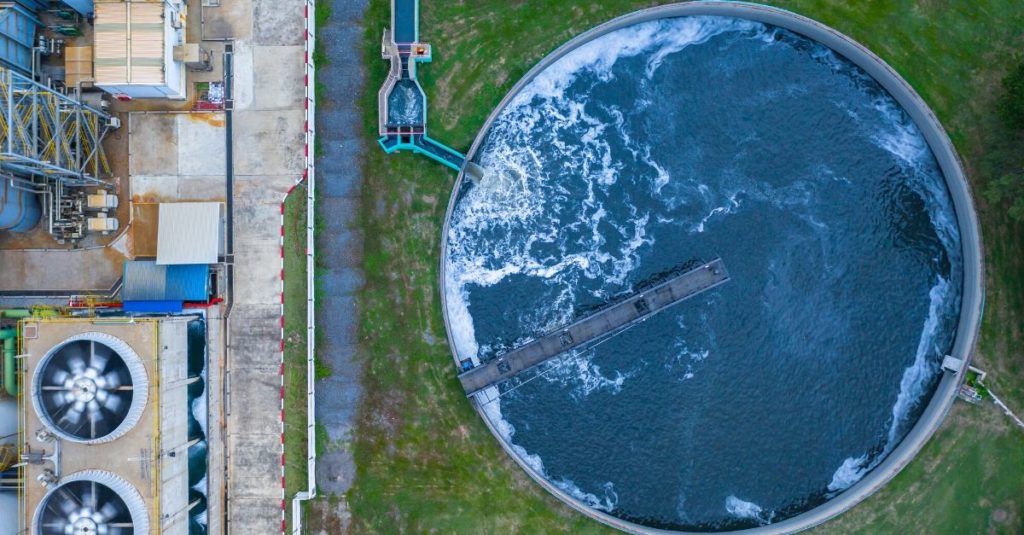Mechanical WWTP .1 MGD
The F:M in the wastewater treatment network at a National Park in Wyoming was optimal from July–October. There was consistent organic carbon loading during this time from tourist activities. However, when the park closed for the winter, the biomass declined due to reduced influent flows.
This caused treatment issues in the beginning of the next tourist season in May and June because biomass declined during the slow recreation months November-April. Thousands of visitors arrived in the spring and the park did not have the necessary biomass to process the increased loads. The Utilities Supervisor contacted BioLynceus® for a solution to support biomass in their system year-round.

Figure 1. A small mechanical plant with a primary and secondary clarifier similar to the National Park mechanical system.
The operator started adding ProBiotic Scrubber® II (PBII) into their collection lines, 0.05 MGD mechanical treatment plant (Figure 1), lagoon systems, septic tanks, RV dump stations, and pit toilets. This increased the biomass in the wastewater systems which enabled more efficient wastewater processing.
In addition to PBII, the operators dosed the mechanical treatment plant with BioLynceus® Candy Carbon® (CC) from November to May. This treatment provided an organic carbon food source for the biomass when wastewater inputs were minimal.
CC kept the plant biology active through the off season so there was no lag time in the treatment process when visitors arrived the following spring. The bioaugmentation and organic carbon treatment helped promote TSS, BOD, and nutrient removal throughout the system. Additionally, NPDES permit violations were avoided at the treatment plant while the park was using BioLynceus® products.
The combined PBII and CC treatment sustained biomass in the system all year and improved the quality of wastewater treated. The F:M was stabilized for more efficient wastewater processing. Wastewater treatment systems servicing seasonal populations often encounter issues with biomass stability.
A consistent supply of organic carbon is required to sustain the biological growth and metabolism essential for treating wastewater. Variable influent carbon availability can impact biomass formation and function. The organotrophic bacteria that facilitate biological oxygen demand (BOD) and total suspended solids (TSS) removal are impaired by insufficient organic substrate availability.1
The food to microbe ratio (F:M) of a system describes the relationship between quantity of organic carbon and biomass. Optimal F:M can vary at different plants depending on operational and plant design factors.2 However, when the F:M in a system decreases from optimal, this indicates an insufficient organic substrate supply, a diminished biomass, or both. Applying bioaugmentation and supplementing external organic carbon in wastewater treatment can help to maintain a balanced biomass.
BioLynceus® ProBiotic Scrubber® II and Candy Carbon® balance F:M in wastewater systems.
1 Gerardi, M. (2006). Wastewater Bacteria. Hoboken, New Jersey: John Wiley & Sons, Inc. Pp.73, 181. https://www.amazon.com/Wastewater-Bacteria-Michael-H-Gerardi/dp/0471206911
2 Mishoe, G.H. (1999). F/M ratio and the operation of an activated sludge process. Florida Water Resources Journal 3, 20–21. https://www.fwrj.com/articles2/9903.pdf



